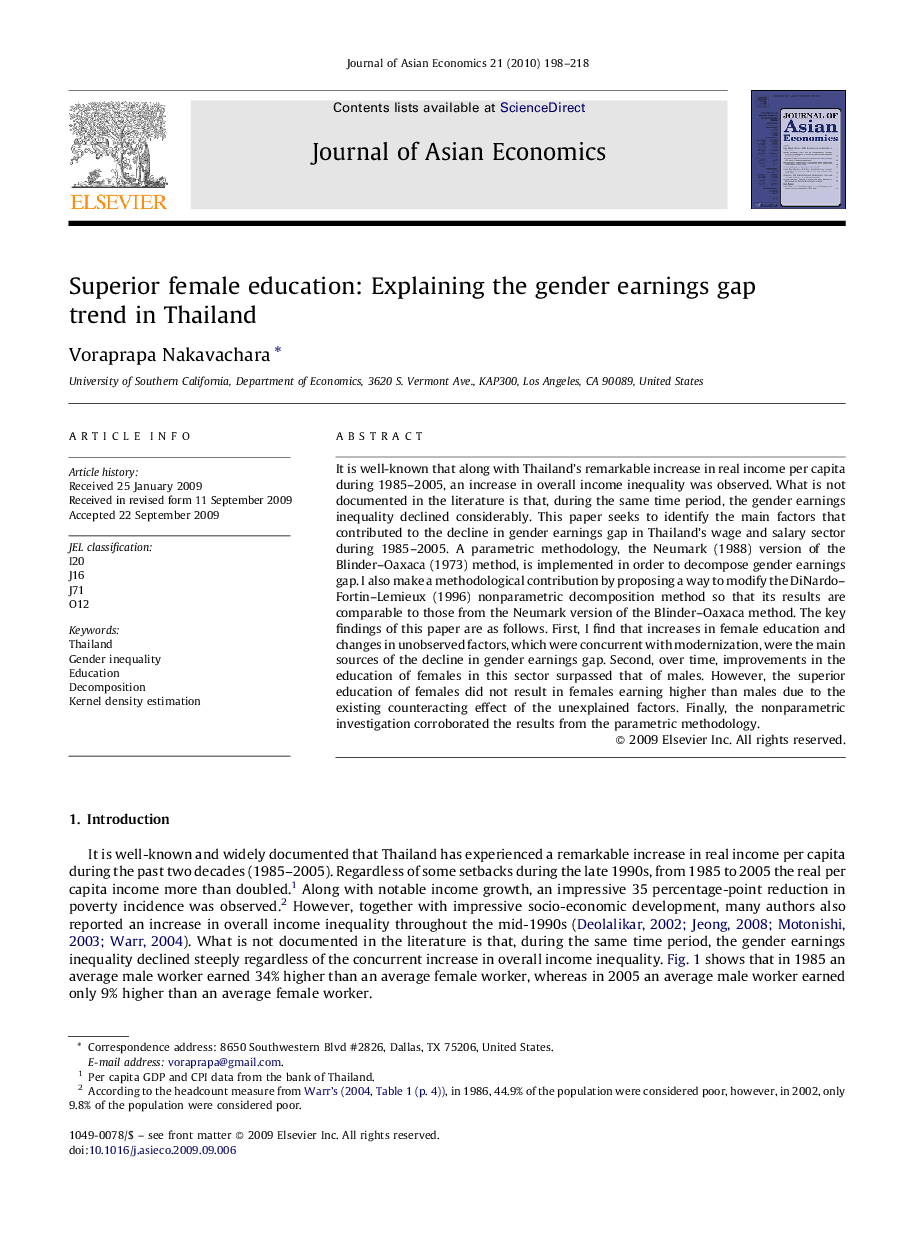| Article ID | Journal | Published Year | Pages | File Type |
|---|---|---|---|---|
| 5087517 | Journal of Asian Economics | 2010 | 21 Pages |
Abstract
It is well-known that along with Thailand's remarkable increase in real income per capita during 1985-2005, an increase in overall income inequality was observed. What is not documented in the literature is that, during the same time period, the gender earnings inequality declined considerably. This paper seeks to identify the main factors that contributed to the decline in gender earnings gap in Thailand's wage and salary sector during 1985-2005. A parametric methodology, the Neumark (1988) version of the Blinder-Oaxaca (1973) method, is implemented in order to decompose gender earnings gap. I also make a methodological contribution by proposing a way to modify the DiNardo-Fortin-Lemieux (1996) nonparametric decomposition method so that its results are comparable to those from the Neumark version of the Blinder-Oaxaca method. The key findings of this paper are as follows. First, I find that increases in female education and changes in unobserved factors, which were concurrent with modernization, were the main sources of the decline in gender earnings gap. Second, over time, improvements in the education of females in this sector surpassed that of males. However, the superior education of females did not result in females earning higher than males due to the existing counteracting effect of the unexplained factors. Finally, the nonparametric investigation corroborated the results from the parametric methodology.
Related Topics
Social Sciences and Humanities
Economics, Econometrics and Finance
Economics and Econometrics
Authors
Voraprapa Nakavachara,
